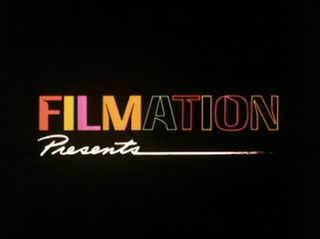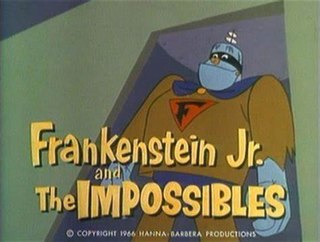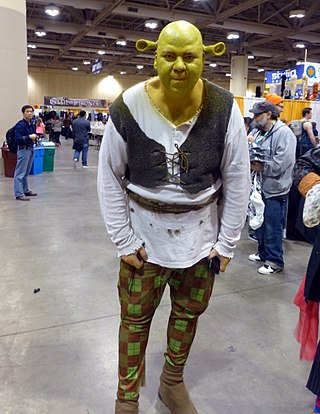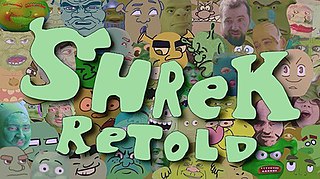
A storyboard is a graphic organizer that consists of illustrations or images displayed in sequence for the purpose of pre-visualizing a motion picture, animation, motion graphic or interactive media sequence. The storyboarding process, in the form it is known today, was developed at Walt Disney Productions during the early 1930s, after several years of similar processes being in use at Walt Disney and other animation studios.

Filmation Associates was an American production company that produced animation and live-action programming for television from 1963 until 1989. Located in Reseda, California, the animation studio was founded in 1962. Filmation's founders and principal producers were Lou Scheimer, Hal Sutherland and Norm Prescott.
Modern animation in the United States from the 1986 to 2004 is frequently referred to as the renaissance age of American animation. During this period, many large American entertainment companies reformed and reinvigorated their animation departments, following the dark age, and the United States had an overall profound effect on animation globally.

The Maxx is an American comic book series created by Sam Kieth in 1993 and originally published monthly until 1998 by Image Comics for 35 issues, before being collected in trade paperback by DC Comics' Wildstorm imprint. The first appearance of the character was in Darker Image #1 by Image Comics in March 1993. The comic book, starring an eponymous purple-skinned hero, spawned a 13-episode animated series on MTV that originally aired April–June 1995. Starting in November 2013 and ending in September 2016, the original series has been republished by IDW as The Maxx: Maxximized with new colors and improved scans of the original artwork by Sam Kieth and Jim Sinclair. In 2018, the Maxx featured in a five-issue crossover series with Batman, published by IDW.

Traditional animation is an animation technique in which each frame is drawn by hand. The technique was the dominant form of animation in cinema until the end of the 20th century, when there was a shift to computer animation in the industry, specifically 3D computer animation.

Joseph Roland Barbera was an American animator and cartoonist, best known as the co-founder of the animation studio Hanna-Barbera.
Saturday TV Funhouse is a segment on NBC's Saturday Night Live featuring cartoons created by SNL writer Robert Smigel. 101 "TV Funhouse" segments aired on SNL between 1996 and 2008, with one further segment airing in 2011. It also spawned a short-lived spinoff series, TV Funhouse, that aired on Comedy Central.
Daniel Campbell Gordon was an American storyboard artist and film director who was best known for his work at Famous Studios and Hanna-Barbera Productions. Gordon was one of the first famous film directors. He wrote and directed several Popeye the Sailor and Superman cartoons. Later in his career, he worked on several cartoons featuring Yogi Bear, Huckleberry Hound, and many others. His younger brother, George Gordon, also worked for Hanna-Barbera.
Zachary Thomas Moncrief is an American artist, producer, director, and writer in the animation industry. He's currently a co-executive producer on Netflix's pre-school series Ghee Happy. His titles have included supervising producer, writer, supervising director, storyboard artist, designer, and songwriter. In 2009, an episode from Phineas and Ferb, which he directed entitled "The Monster of Phineas-n-Ferbenstein", received a Primetime Emmy Award nomination in the category for Outstanding Special Class Short-format Animated Programs.

Frankenstein Jr. and The Impossibles is an American animated television series produced by Hanna-Barbera Productions. It premiered on September 10, 1966 on CBS, and ran for two seasons on Saturday mornings.

David Feiss is an American animator, storyboard artist, screenwriter, and director. Feiss began his career working for Hanna-Barbera in the late 1970s. He received his first credit for the 1981 adult animated film Heavy Metal. He gained notoriety throughout the late 1980s and 1990s as an animator for Jetsons: The Movie, Once Upon a Forest, The Town Santa Forgot, and The Ren & Stimpy Show, among others.

An animation studio is a company producing animated media. The broadest such companies conceive of products to produce, own the physical equipment for production, employ operators for that equipment, and hold a major stake in the sales or rentals of the media produced. They also own rights over merchandising and creative rights for characters created/held by the company, much like authors holding copyrights. In some early cases, they also held patent rights over methods of animation used in certain studios that were used for boosting productivity. Overall, they are business concerns and can function as such in legal terms.

The Metro-Goldwyn-Mayer cartoon studio was an American animation studio operated by Metro-Goldwyn-Mayer (MGM) during the Golden Age of American animation. Active from 1937 until 1957, the studio was responsible for producing animated shorts to accompany MGM feature films in Loew's Theaters, which included popular cartoon characters Tom, Jerry, Droopy, Butch, Spike, Tyke, and Barney Bear.
A motion comic is a form of animation combining elements of print comic books and animation. Individual panels are expanded into a full shot while sound effects, voice acting, and animation are added to the original artwork. Text boxes, speech bubbles and the onomatopoeia are typically removed to feature more of the original artwork being animated. Motion comics are often released as short serials covering a story arc of a long running series or animating a single release of a graphic novel. Single release issues of a story arc are converted into ten- to twenty-minute-long episodes depending on content.
Events in 2001 in animation.
Greg Miller is an American animator, cartoonist, writer, storyboard artist, and composer. His art style is based on the animation style of Schoolhouse Rock!, which was used in his own television series, Whatever Happened to... Robot Jones?, airing on Cartoon Network from 2002 to 2003 and his short film, The Wizzard of Krudd, a canceled Nickelodeon short featuring the voice of Devon Werkheiser as the protagonist. He worked on the production of Shrek the Third and Monsters vs. Aliens as the additional storyboard artist. His recent credits include being a storyboard artist, writer, animator, and character designer on Secret Mountain Fort Awesome, Gravity Falls, and Uncle Grandpa.

DreamWorks Animation's Shrek film series, based on William Steig's book of the same name, has an underground Internet fandom that started around 2009.

Gilbert H. Turner was an American animator, comic book artist and producer.

Shrek Retold is a fan-made reanimated collab film based on the 2001 film Shrek, in turn based on the book by William Steig. Released on November 29, 2018, to YouTube, the project was led by YouTuber Grant Duffrin.
A reanimated collaboration is a type of collaborative fan-made animation project wherein each animator recreates one shot of an existing film in their own style. The individual works are then stitched into the original order and published on the internet as a completed collaboration, creating a collaborative tribute to the original film. This differs from a shot-for-shot recreation, as the goal of a reanimate is to display each of the independent animators' unique stylings rather than to produce a unified or identical result. Multiple collaborations focus on media made a decade or more prior that receives renewed interest due to internet memes, nostalgia, or the death of a voice actor. As they are often non-profit tributes to an existing work, animators expect to receive little or no profit.











